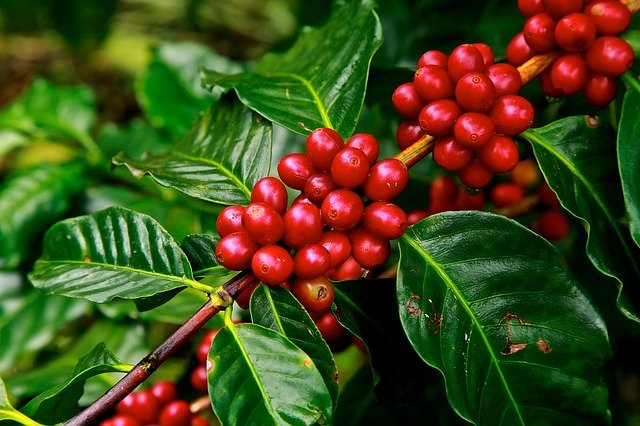When talking about kratom, you will probably hear that kratom is in the same family as coffee. Whilst this fact is true is not as accurate as it could be. Indeed, kratom and coffee are related. But that does not mean that kratom is a sub-species of coffee. Actually, kratom and coffee are both plants in the same family: the Rubiaceae family. In this article, you will learn some interesting facts about this group of plants.
Plant Classification
There is a science fully that identifies, names, describes, and classifies plants. This science is called taxonomy. When a new plant is discovered, scientists must first identify it by comparing it with other plants. After this identification process, they classify the new plant within a category or group of categories depending on its properties. Finally, they come up with a description for the new plant.
Plants are classified following a standard hierarchy that comprises ten categories. However, not all these categories apply for all species.
- Kingdom
- Subkingdom
- Superdivision
- Division
- Class
- Subclass
- Order
- Family
- Genus
- Species
The Rubiaceae Family
A plant family is a group of plants that share common features. This definition may seem quite ambiguous, but the truth is that there is no consensus in the scientific community about what does or does not do a plant family. So far, there are over 600 plant families. Many of these plants are not trees, but shrubs, although you can also find herbs or lianas, as well as tree. You can see the full list of plant families here.
In the case of the Rubiaceae family, its characteristics are:
- Flowering plants
- An inferior ovary
- Opposite leaves, simple and entire, in whorls or with stipules
- Interpetiolar stipules
- Tubular sympetalous corollas
- Some features may vary depending on the native region of the species: tropical Rubiaceae species are usually evergreen, desert species are usually needlelike, and temperate species are deciduous.
Rubiaceae plants can be found throughout the world, but most of the Rubiaceae species are native to the humid environments of the tropics and subtropics. The countries with the largest number of Rubiaceae species are Venezuela, Colombia, and New Guinea.
Some Famous Plants in the Rubiaceae Family
The Rubiaceae family groups 617 genera and over 13,500 species. Some of these plants are famous for their therapeutic uses, others because they are edible, while others can be ornamental. Of course, exploring each of these genera or species would be an impossible task. But we have chosen the top popular plants in the Rubiaceae family.
Kratom (Mitragyna speciosa)
Mitragyna speciosa, or kratom, is a species in the Mitragyna genus. Kratom is an evergreen tree native to Southeast Asia. Its leaves contain mitragynine, 7-hydroxymitragynine and other alkaloids that act on your opioid receptors. Thus, kratom leaves provide different effects that range from pain relief to stimulation. Thanks to this wide range of effects, millions of people use kratom to cope with pain, depression, anxiety, fatigue or insomnia. It has also become a popular remedy to treat the symptoms of withdrawal. If you want to learn more about kratom, we recommend that you read this blog. Here you can find many topics about kratom, including a kratom glossary and a kratom dictionary.
Coffee (Coffea)
The coffee genus (Coffea) groups over 120 species of small trees and shrubs that grow in Asia, Africa, and South and Central America. The most popular coffee crops are Arabica (Coffea arabica) and Robusta (Coffea canephora). The coffee fruits contain two seeds wrongfully known as “coffee beans” (they are not beans, actually), which are then used to make the famous coffee drink. Coffee is praised for its aromatic flavor. It is also a source of caffeine, which means that coffee can give you an energy boost. But coffee also has antioxidant properties, cardiovascular-protective effects, and may even improve your cognitive functions.
Gardenia
Gardenia genus comprises 140 flowering species. Thanks to its flowers, many people have gardenias as ornamental plants. But this tropical plant may also have therapeutic effects, as the chemicals that it contains might have promising effects for type-2 diabetes patients. But gardenia might also help protect the liver, reduce cholesterol levels, and fight inflammation and swelling. Moreover, gardenia is also a natural food colorant.
Cinchona
While cinchona is not so popular as coffee or gardenia, it is still a very important plant. Cinchona is again a genus and groups over 20 species, all of them native to South America. The bark of cinchona contains quinine. That’s why cinchona was used to treat malaria during the 18th century. Cinchona is used to relieve bloating, hemorrhoids, cold, and to increase appetite.
So, as you can see, the Rubiaceae family is much more than kratom and coffee. It comprises a large number of different plants genus and species.




Kratom is a MIRACLE PLANT and a GODSEND that has 150% SAVED MY LIFE and sooooooo many others!!!!!!! I have been clean going on 6yrs now all because of this MIRACLE PLANT!!!!!!! I don’t understand why all the LIES and FAKE NEWS from the FDA, DEA, BIG PHARMACEUTICAL CO. condemning this plant that is SAVING LIVES!!!!!! The only thing that I can think is that it’s all about the $$$!!!!!!! They don’t care about the lives it’s saving they’re just worried about the $$$ that they are losing!!!!! So to ever reads this THIS PLANT IS A MIRACLE PLANT AND A GODSEND!!!!